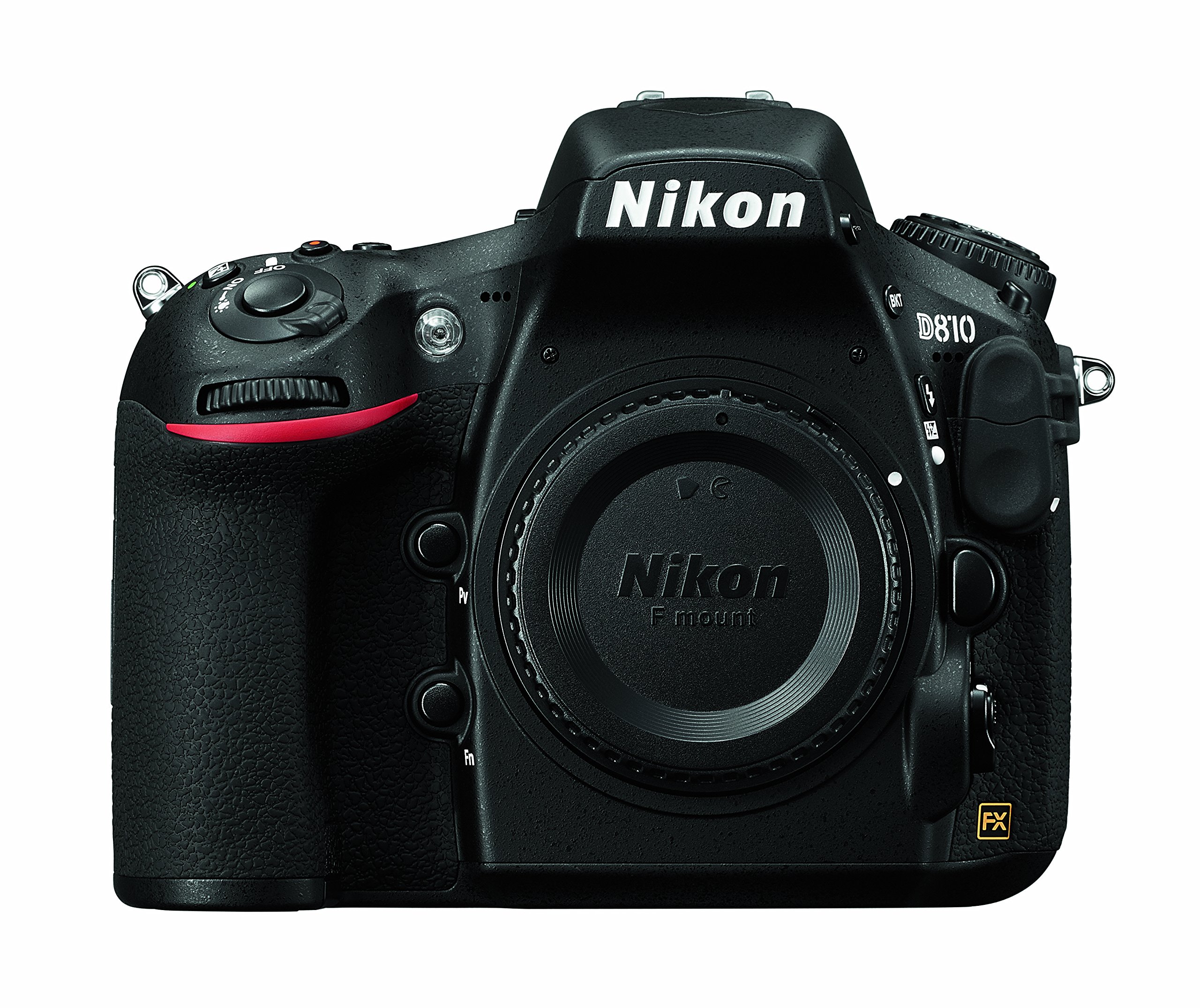Tom's Guide Verdict
Nikon's highest-resolution camera is also one of the best pro DSLRs on the market.
Pros
- +
Extreme sharpness due to lack of anti-aliasing filter
- +
Excellent image quality
- +
Excellent autofocus, and fast image processing
- +
Advanced shutter with superlow vibration
- +
Long battery life
Cons
- -
Noisy images at high ISO
- -
Difficulty locking critical focus in portrait shots
Why you can trust Tom's Guide
Whether you're a professional photographer or you just want to shoot like one, the Nikon D810 is a DSLR with serious power. This $3,300 camera is an upgrade to the company's popular D800 and D800E models. It sports the same 36.3-megapixel resolution and full-frame capture, but with a range of improvements. There's a new 51-point focusing system; a buffer twice the size of that in the D800, to allow longer burst shooting; and a quieter shutter. Other notable improvements include a wider ISO light-sensitivity range, 5 frames-per-second capture speeds and a new higher-resolution OLED screen within the optical viewfinder. Add in face-detection autofocus during optical viewfinder shooting, and you have one of the best DSLRs money can buy.
Design: quieter and more comfortable
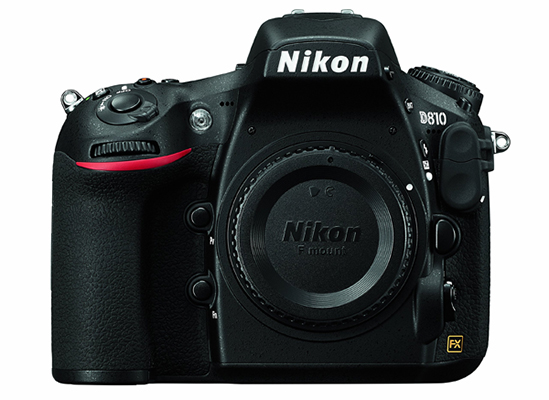
The D810 is very similar to the D800 that it replaces, although it has been tweaked to be more comfortable to hold. This improvement is especially welcome for shooters with small hands, like myself. Together, the D810's body and battery weigh about 34.6 ounces (981 grams), which is almost an ounce (20 grams) lighter than the D800. Although that's not a big change, every little bit helps when you're carrying heavy camera gear.

A built-in flash is useful for fill flash and for triggering Nikon strobes mounted off the camera. I believe every camera — even professional models — should have a built-in strobe, because fill flash is vital in so many situations, such as brightening faces shadowed by backlighting or evening out tonality with subjects in shadow.
Internally, the Nikon D810 has a host of new components, including a Kevlar- and carbon-fiber shutter that replaces the noticeable "thunk" on the D800 with a more gentle movement that causes less vibration. All DSLR shutters should be this smooth and quiet.
MORE: Best DSLRs
Image quality: stunning
I spent a lot of time shooting with the D800, and its images are among some of the most incredible I've seen from any DSLR I've tested. Nikon claims the new sensor in the D810 further boosts image quality, though it's not clear if Nikon has done anything new, aside from removing the optical low pass filter (OLPF).
The D810 is one of the few DSLRs to come without an OLPF. It's meant to remove moiré — a pattern of wavy lines that appears in photos of fine lines or shapes that are too high-detail for the sensor. The D810 promises to eliminate this pattern without requiring the filter, thus resulting in sharper images.
MORE: A Digital Camera Glossary
As megapixel count increases on a sensor, the amount of noise (graininess) tends to increase as well, since the individual pixels on the sensor need to get smaller and closer together. That means that noise is a concern with cameras like the D800 and D810, especially in low light. To that end, I evaluated many of the test images for this review at 100 percent size in order to see what's going on at a pixel level.
I tested the Nikon D810 with a number of Nikkor lenses, including the 35mm f/1.8, the 35mm f/1.4G, the 24-70 f/2.8G zoom and the 58mm f/1.4G. The D810 demands good glass because the sensor reveals so much detail that it magnifies the strengths or weaknesses of a lens. Even the venerable 24-70mm, a mainstay of so many photographers, had a slight softness to its images when compared to the supersharp 58mm or even the 50mm.
I tested the D810 by capturing images in both 14-bit uncompressed RAW files and JPEG at the highest resolution to compare the results. Samples in this review are original JPEGs, and I confirmed that they are faithful to how images appear in RAW. Our lab also shot photos of test patterns with the very sharp 58mm lens and used the imatest evaluation software to judge factors such as color accuracy and noise at different ISOs.
Bright-light results
In bright conditions, it would be hard to find a DSLR that produces better images than the D810. As part of the redesign of the camera's internals, the D810 now can shoot down to ISO 64. The extra f-stop of lowered light sensitivity really makes the camera more usable in bright sun (without the need for a light-restricting neutral density filter).
The level of detail the D810 captures is breathtaking, as is evident in this quick handheld shot of flowers at a park, and in a cropped section from that shot. The detail on the fly making a landing to the left of the bloom is astounding, the legs are clearly visible and the proboscis tongue can be seen extending toward the flower.
(Click any photo sample for a larger version.)
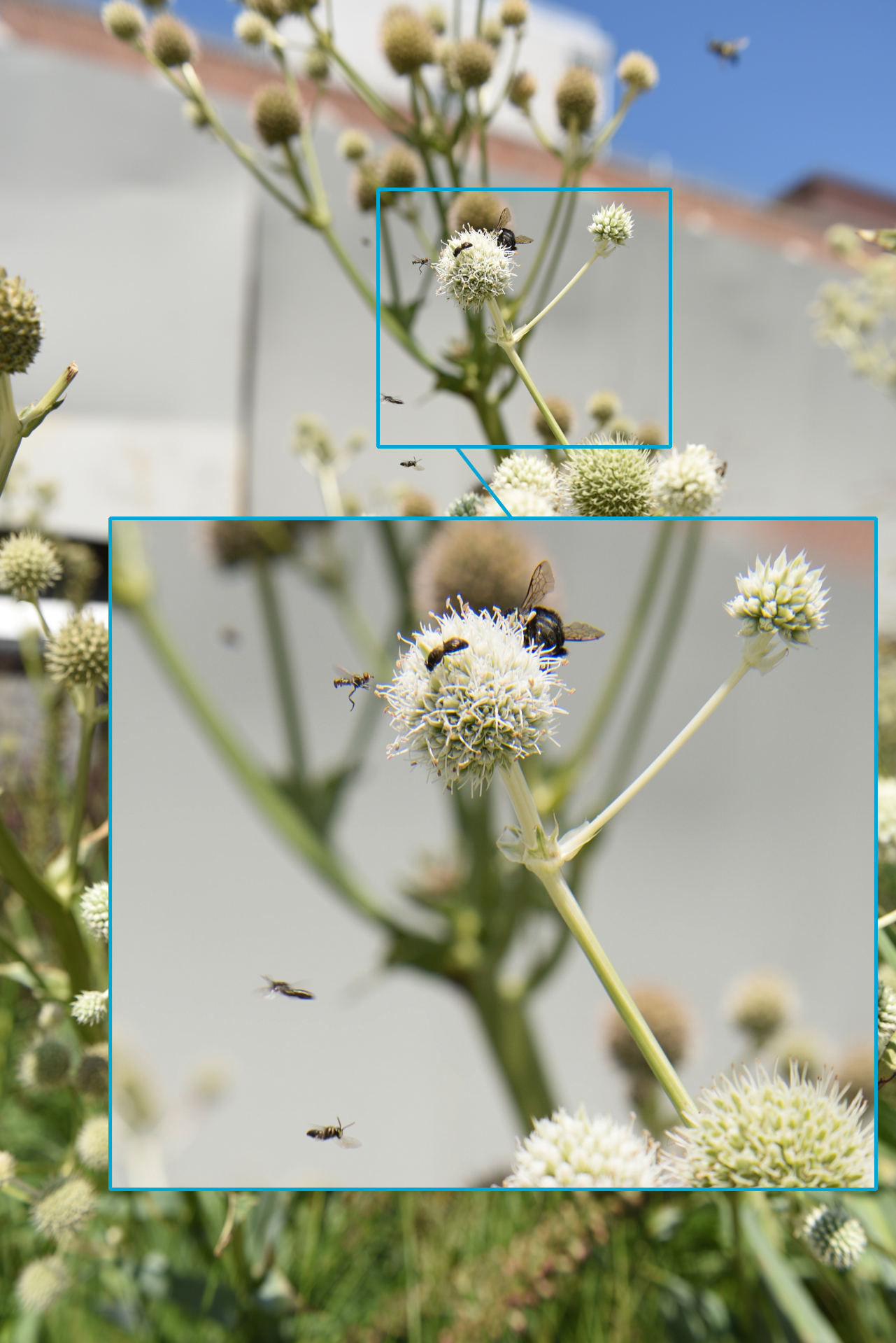
In this image captured in Live View mode, we see again the amazing detail evident in the D810 files. While the goose's head moved a touch out of focus from the time the Live View autofocus locked on until the shutter tripped, the detail in the plumage is amazing.
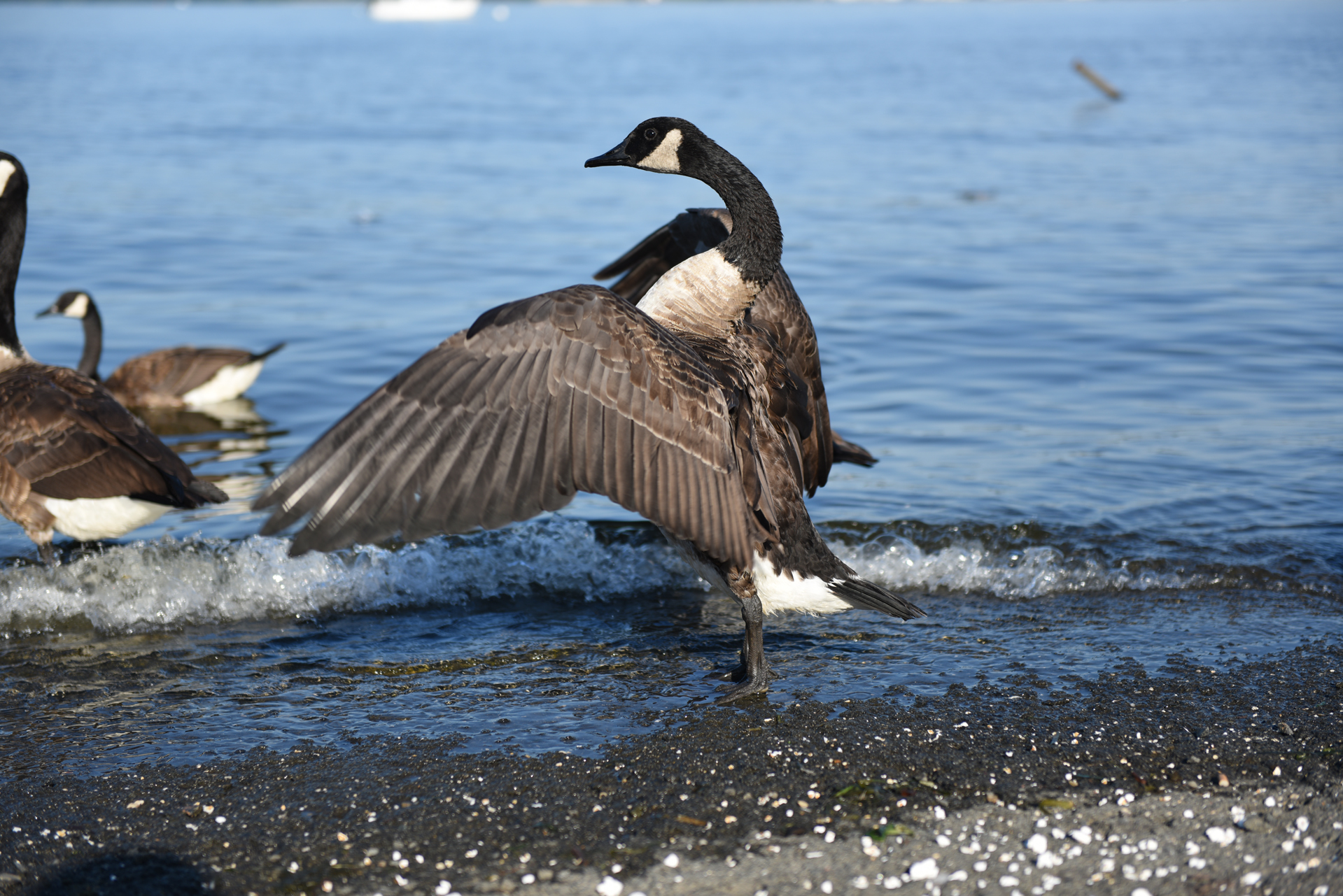
The D810 is also a great portrait camera, yielding accurate skin tones and tons of detail, even when the subject is far from filling the frame, as in this shot. Taken with the 24-70mm zoom, this image also shows the need to have excellent glass on the D810.

If you look at the area of detail in the crop, you'll notice two things: a strange halo around the subject's ear that looks like backlighting (but isn't) and a purple cast on the asphalt that wasn't there in reality. This purple cast isn't camera noise (as it's not at all evident in images from the prime lenses I tested); it's some chromatic aberration being produced by the 24-70mm that's not noticeable on most other bodies.
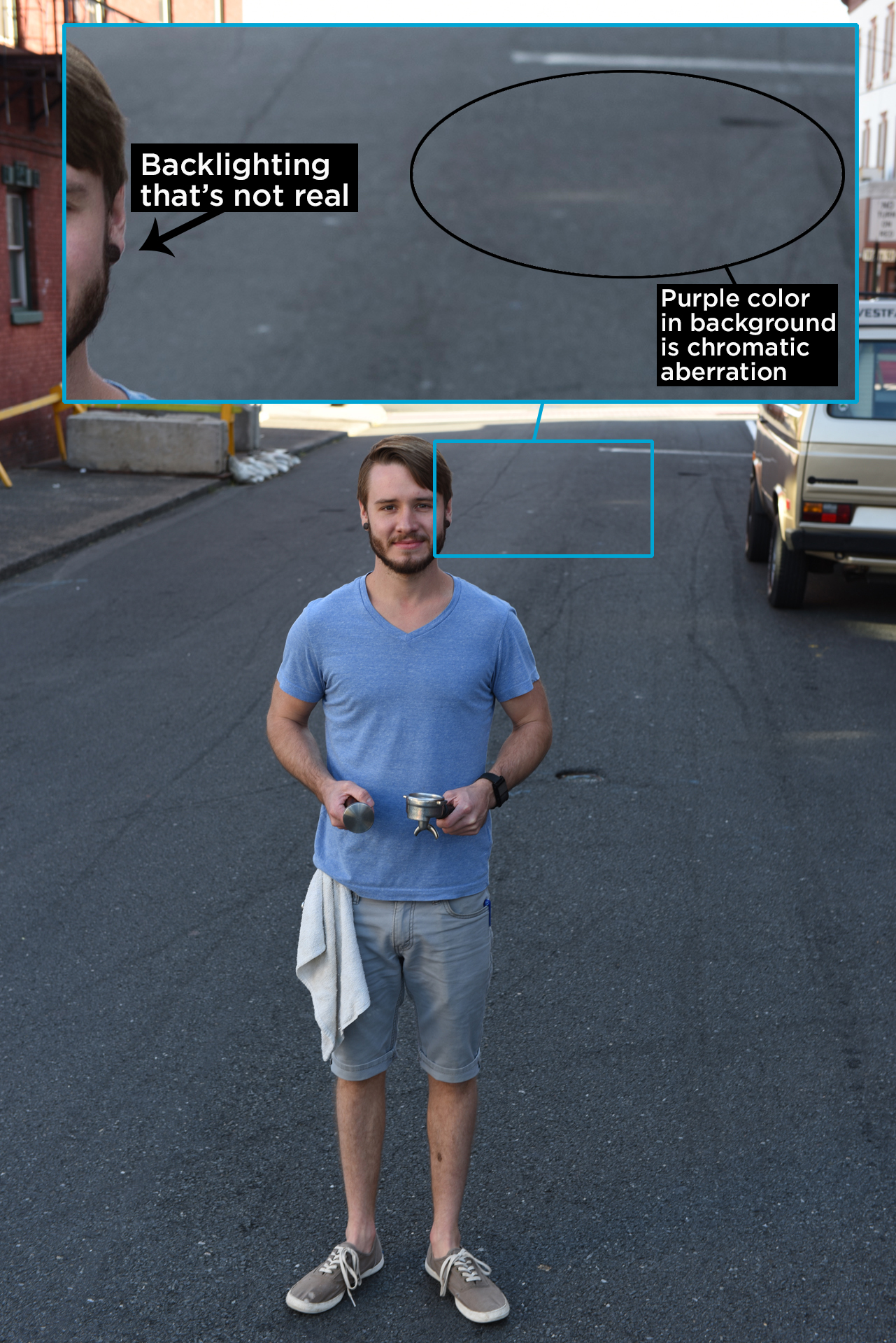
Switch to something like the 35mm f/1.4 lens, and the results are stunning, even as the light starts to drop. This shot at ISO 360 shows tack-sharp focus on the eyes and eyelashes and great bokeh — the soft blurring of out-of-focus areas in a photo.
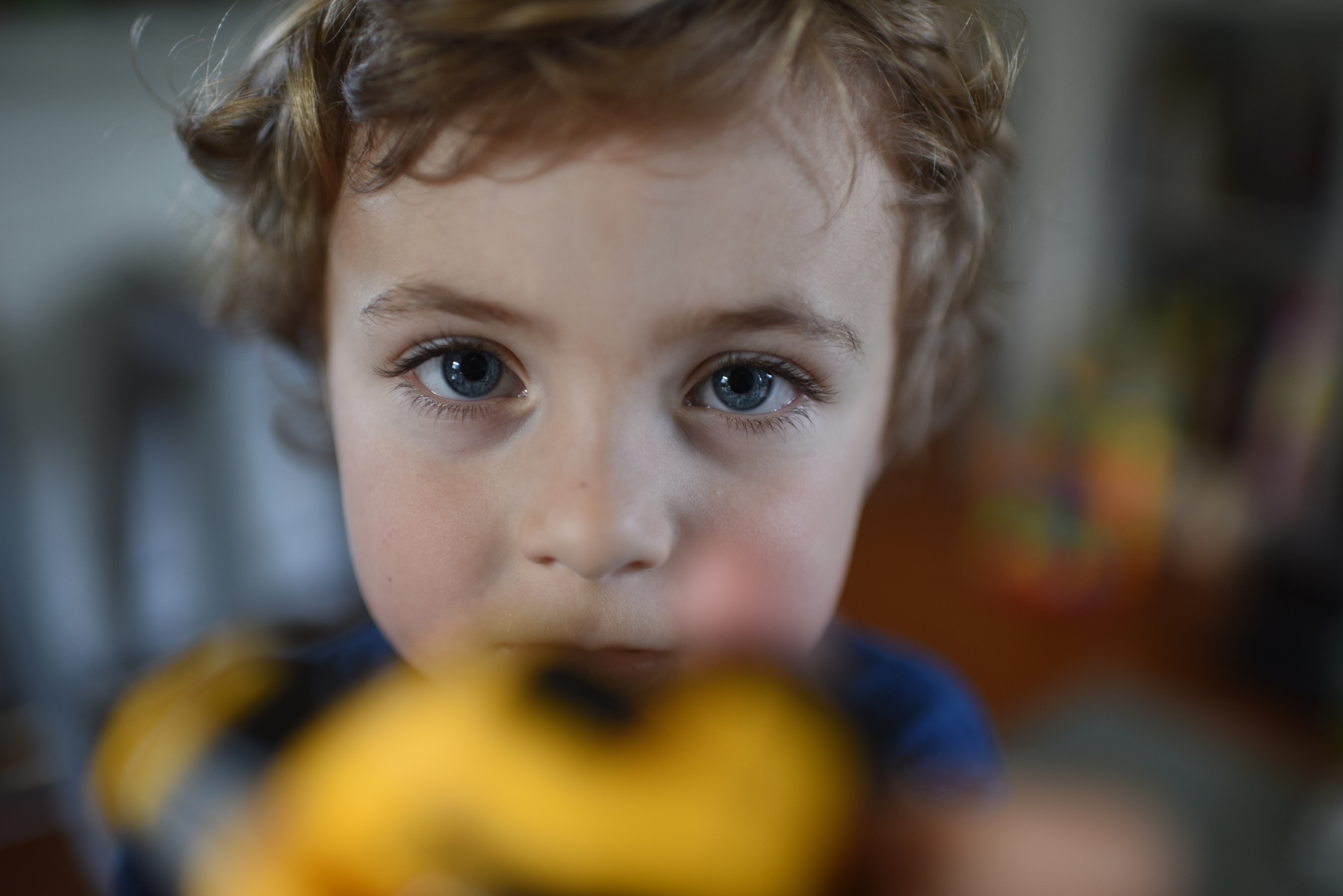
Low-light results
For the D800, low light used to mean shots starting at about ISO 400. With the D810, I was comfortable shooting subjects up to about ISO 640 without much concern about noise.
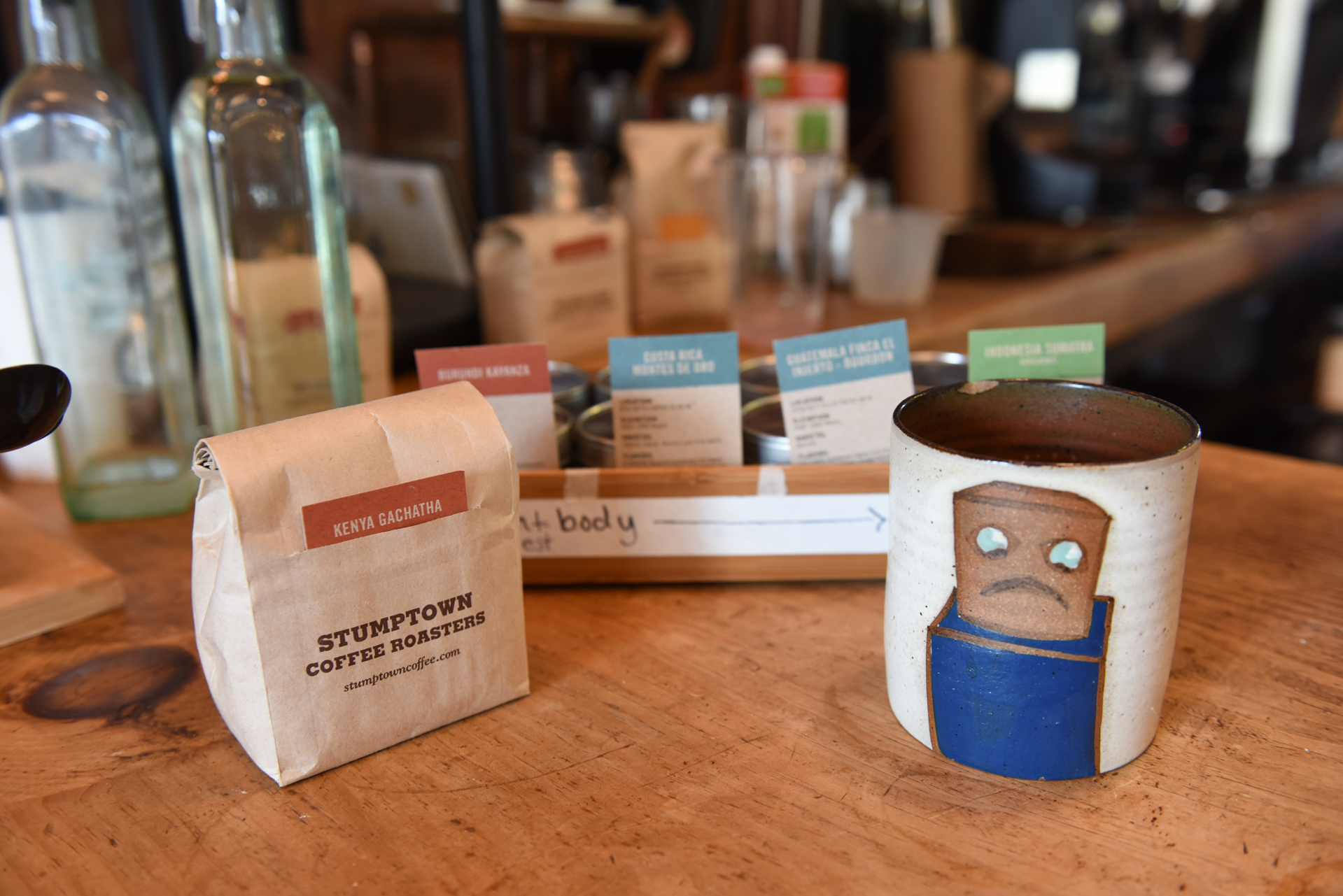
The D810 produces very minimal noise (graininess) at low ISO sensitivity settings. But starting at ISO 640, sensor noise becomes more noticeable than it would on the Nikon D4S. That camera has fewer (and thus larger) pixels on the same-size sensor.
MORE: How to Take Great Photos with a DSLR or Mirrorless Camera
In this twilight image, I pushed the ISO up a few stops to 1250 in order to stop down the aperture and still set a shutter speed fast enough for hand-holding the camera (something I do at a sporting event). The image has great detail and low noise for an ISO 1250 shot.

And here again at ISO 1600, we see minimal noise (relatively speaking) with a shot illuminated both by the daylight in the front of the building and the harsher work lights within. There's grain here, but vastly less than I'd expect from a sensor with such a high pixel count.
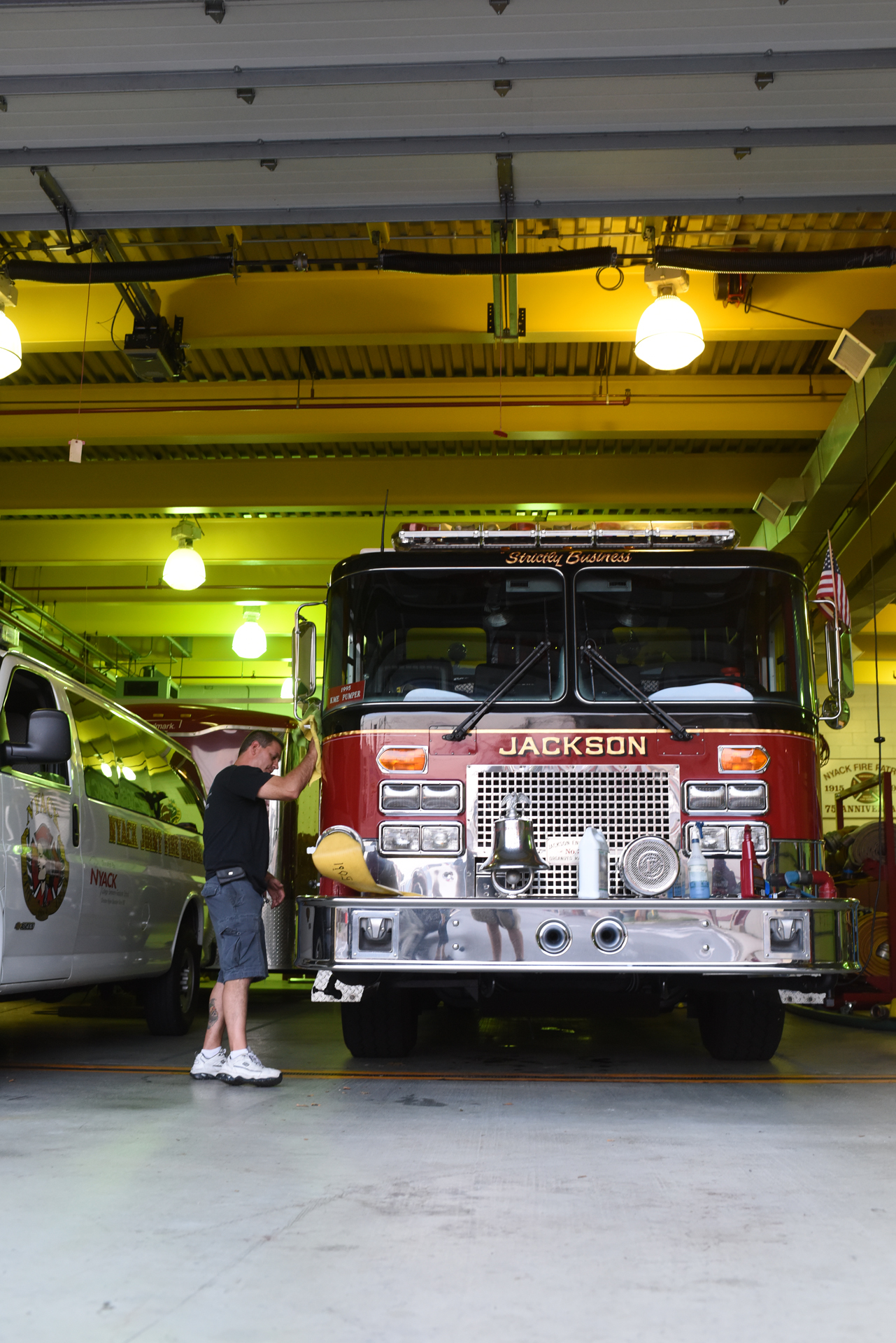
Even pushing to ISO 10,000 still produced amazingly clean results for a camera with this resolution, as is seen in this shot taken at twilight.
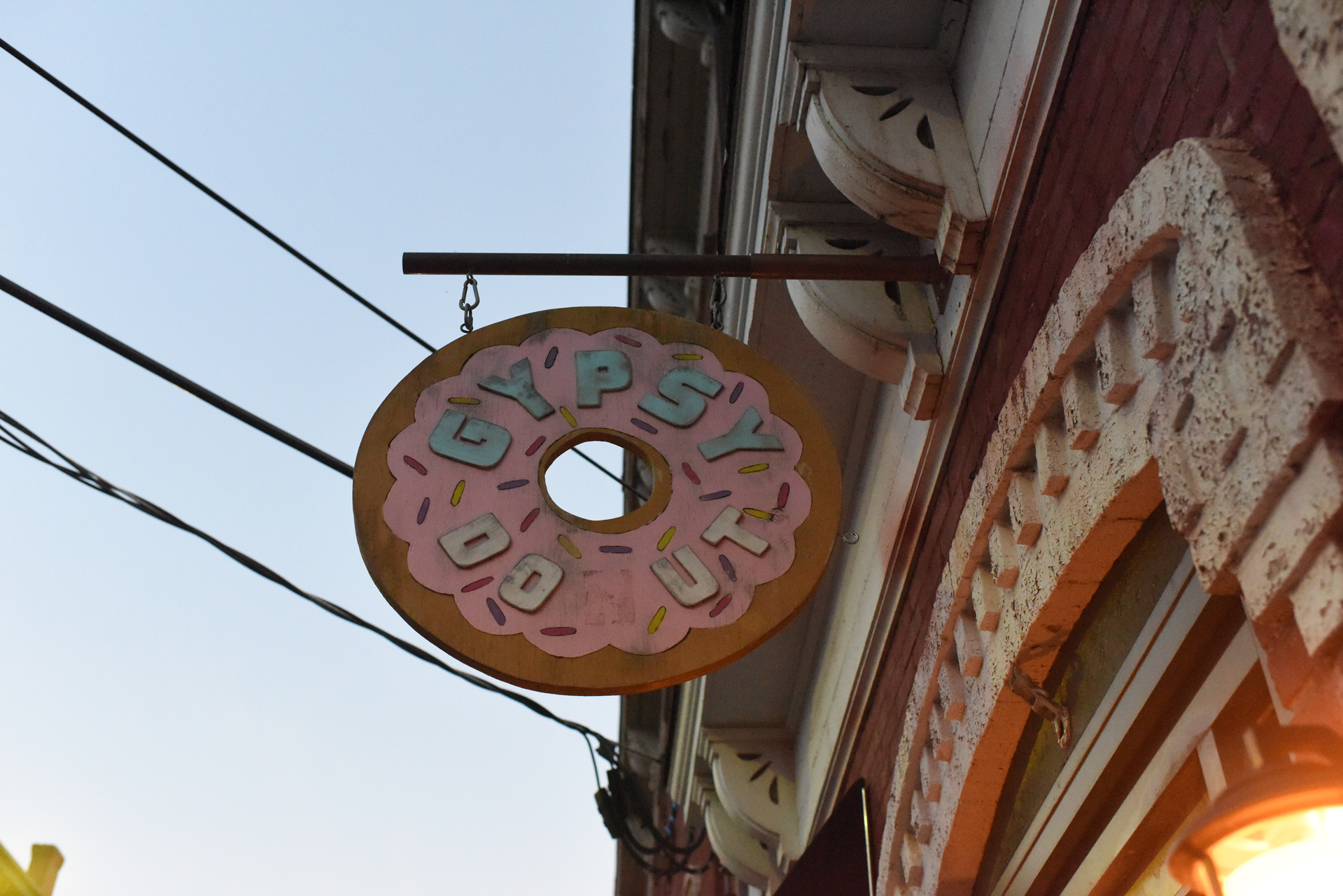
The lack of the OLPF on the D810 obviously raises some concerns about moiré. I tried very hard to find an image with the D810 where moiré issues cropped up, but it was much harder than I would have expected. In fact, the D810 was so good with typical moiré-inducing subjects, I'm starting to wonder if camera processing has moved to an era when the OLPF is doing more harm than good.
In this photo, the thin rows of wood might be enough to cause moiré, but they don't have any effect on the D810. This might be due to the in-camera processing of the file or because the D810 has such a high-resolution sensor. In any case, the lack of the OLPF results in considerably fewer instances of moiré than I would have expected.
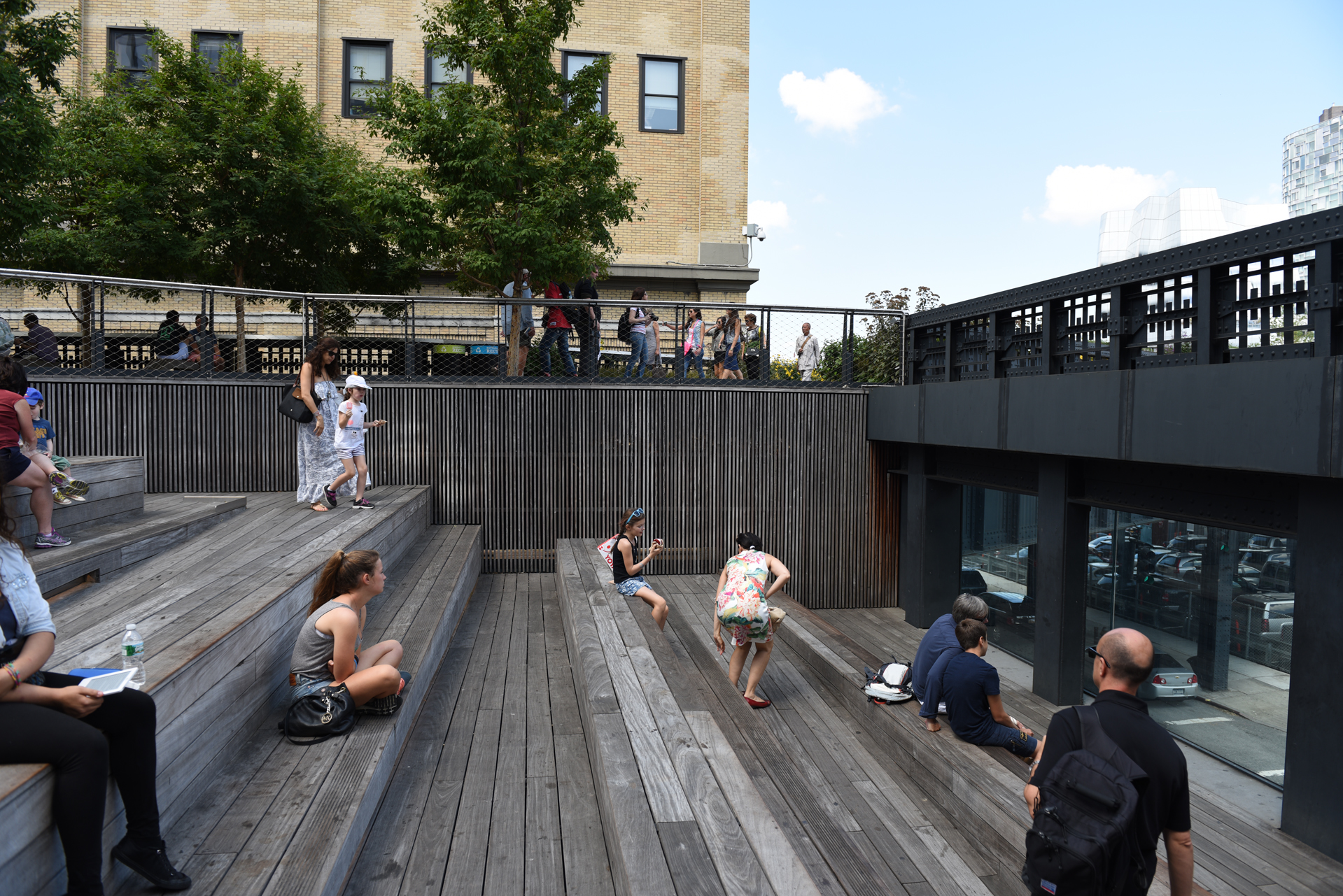
I spent a day in New York City, shooting brick walls, grates, fabrics and almost any moiré-causing subject I could find. The best I could come up with was this grate at Highline Park. To be fair, looking at the grate with just my eyeballs induced a moiré effect, so I'm not sure I could expect anything better from the camera.(When you click for the larger image, the moiré disappears.)
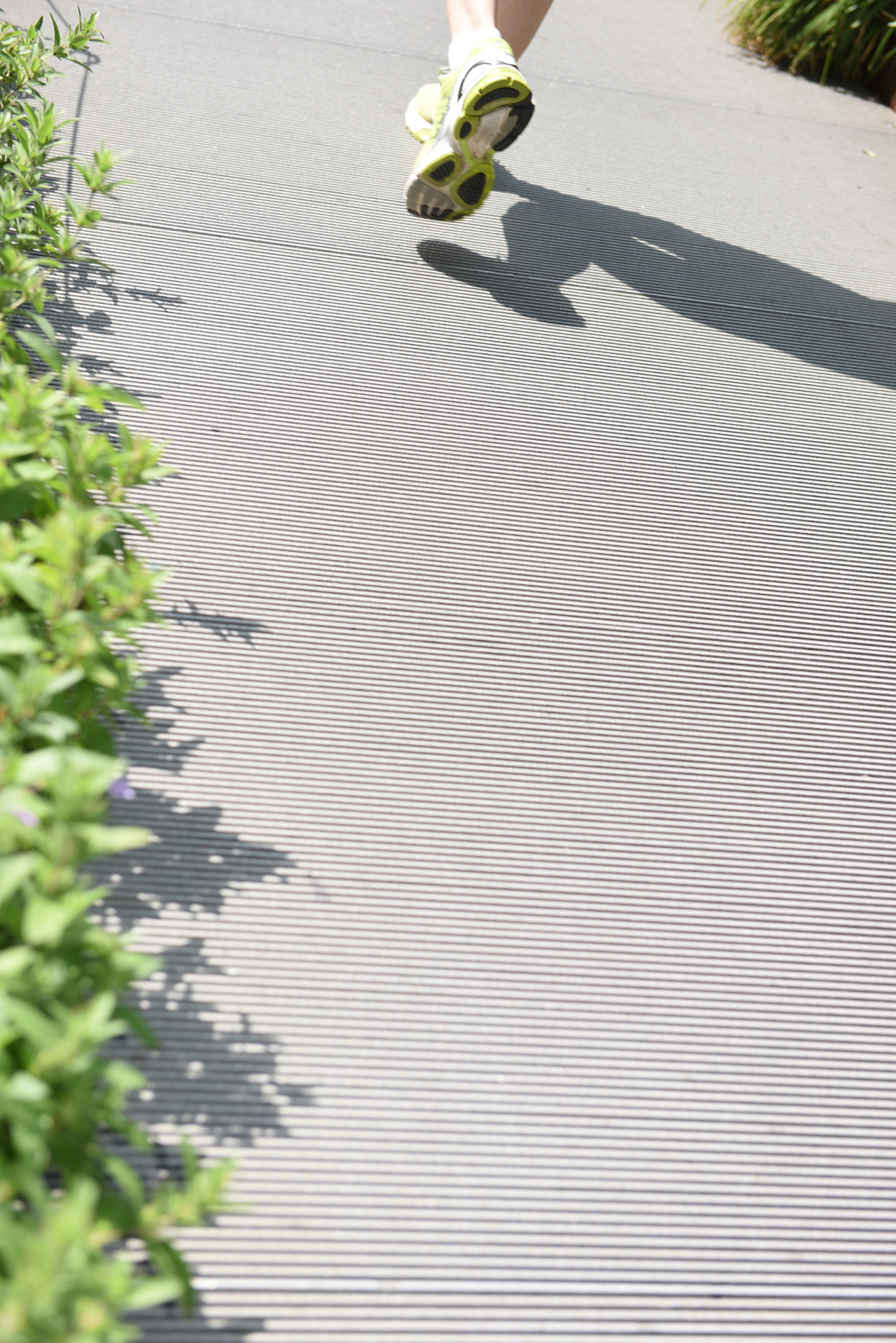
Autofocus and shooting speed
The Nikon D810's autofocus is much faster and more accurate than the D800's. In fact, it's on a par with the D4S — which isn't surprising, considering the D810 uses the same AF system. The D810 had no problem tracking moving subjects and locking on, and the wealth of autofocus options gives the photographer the chance to tackle any scene. The 51-point phase-detection focus system can be set to single-point focus; 9-, 21- or 51-point dynamic focus; group area; or 3D tracking.
However, the camera had trouble locking on to the key part of a subject's face when face detection was not on. With the Nikon D3, D3S, D4 and D4S, when I lay a single-point AF sensor over a subject's eye, I get the eye in focus for a huge percentage of the shots. And once I've set that spot, the subject will continue to be in focus as it moves. With the D810, however, I got a much lower percentage of shots in which the eye was actually in focus when face-detection mode was off. As a result, hardly any shots retained focus on the eye as the subject moved.
MORE: Autofocus is the New Megapixel
When I turned on the face-detection focus, which is now available in the optical viewfinder, the camera got the eyeball in focus nearly every time. It's a marked difference, and it helped confirm my suspicion that I was getting less-than-perfect focusing with it off.
With face detection on, the D810's autofocus follows movement well. In this shot, it tracks an erratically moving subject (my son) as he weaves across a field and moves in the direction of the camera. All dozen shots in this set were in focus, from the one farthest away, under the sculpture, right up to the minimum-focus distance.
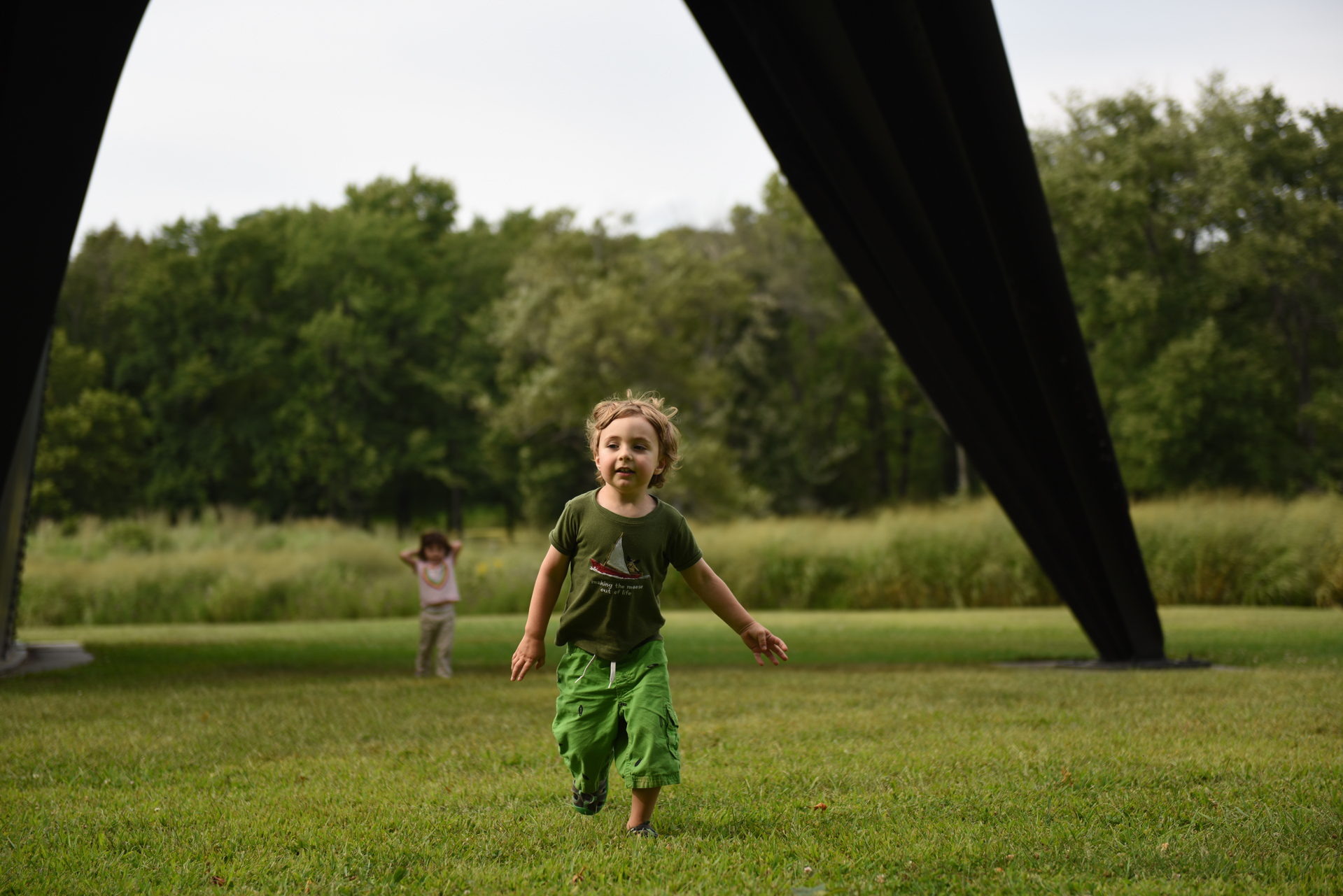
At 5 fps, the D810 can capture images fast enough for most types of sports photography. But more impressive than the capture rate is the number of continuous shots possible, thanks to that large buffer and fast processor. Although the camera cranks out 36-MP images, there's very little downtime.
I tested the camera by shooting 14-bit uncompressed RAW files plus JPEG Fine, and the buffer captured between 17 and 19 frames before slowing from the 5 fps rate (and still kept shooting more slowly). The D810 took only about 17 seconds to fully clear the buffer and return to full-speed shooting. The same test shot with RAW resulted in only 24 frames before the capture speed slowed and 15 seconds to fully clear the buffer. For JPEG Fine I captured 100 frames before the shooting rate slowed, and in a few seconds, I could shoot full-rate again.
Video quality
Video shooters will appreciate the new built-in stereo microphone (the D800 had a monaural mic) with corresponding displays in Live View, as well as the ability to shoot full HD at 1080p 60 fps. ISO is now auto-adjusting in video mode, preventing noticeable and distracting shifts in exposure as lighting conditions change. The camera also includes manual focus control and the ability to simultaneously record video to a card and output it via HDMI to an external monitor.
MORE: How to Shoot Great Video
Generally speaking, the video from the D810 was excellent, though there were a few issues.
In this video, the detail is striking (once I refocused on the subject), with ultracrisp edges. You'll notice that the highlights are overexposed, though that's not unusual in video, since there's a limited dynamic range compared to what you see in stills. (Video quality of sample may vary depending on your Internet service.)
Credit: David Schloss
Controls: plentiful and easy to access
The upper rear control buttons for autofocus lock (AF-L) and autoexposure lock (AE-L) are easy to reach and actuate on the D810, while the pointer finger operates the shutter release and the front control dial. The camera's rear has a normal complement of pro-level switches and buttons, including a dedicated control switch for the Live View modes that toggles between video and camera functions. It also features a control pad and a rear control dial.
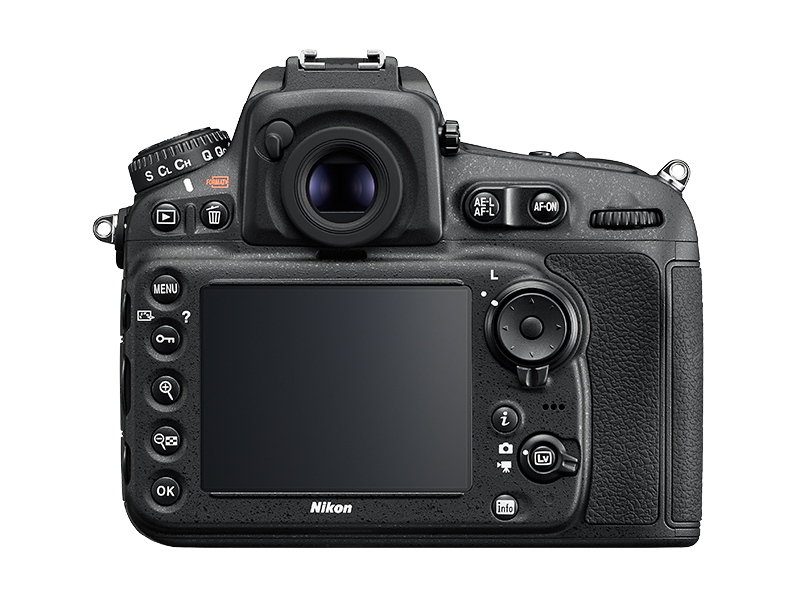
The top of the D810 has a four-way switch for quick access to White Balance, ISO, Quality and Metering, while a ring dial controls the camera's capture speed, (Single, Continuous Low, Continuous High, etc.). The right side of the top deck has a mode selection switch, a dedicated movie button, an exposure compensation dial and a shutter release.
MORE: Best Mirrorless Cameras 2014
The slew of buttons on the front of the Nikon D810 is one of the giveaways that it's a pro camera. On the right (when you're facing the camera) is a bracket control button (also programmable), a button to release the built-in flash, a button to control the flash setting (normal, rear curtain, etc.) and flash exposure compensation, an incident light meter (for flash exposures), and the autofocus control button and switch. On the other side are the front control dial and the programmable Preview and Function buttons.
The D810 scores very well in our test of how easy it is to access key settings. This table shows the number of steps required to access a setting. If there is a dedicated control, such as a dial for shutter speed, there are zero steps.
| Setting | Steps/button presses | Function |
|---|---|---|
| Shutter | 0 | Length of exposure |
| Aperture | 0 | Amount of light let in |
| ISO | 1 | Light sensitivity |
| Focus mode | 1 | Point or points used for focus |
| Light metering | 1 | Part of image with optimized exposure |
| White balance | 1 | Overall color cast of image |
| Exposure compensation | 1 | Set autoexposure to be darker or lighter |
| Wi-Fi sharing | N/A | Send images to smartphone, activate remote viewfinder |
| Video recording | 2 | Switch from photo to video and back |
| Play | 1 | View images or videos you've shot |
| Delete image | 2 | Erase photo from memory card |
| Photo capture resolution | 1 | Amount of megapixels |
| Photo capture quality | 1 | Amount of JPEG compression/detail, or RAW |
| Video capture resolution | 3 | Lines of resolution and frame rate |
| Video capture quality | 3 | Amount of compression/detail |
| Drive | 0 | Single photo, burst, timer, etc. |
| Row 16 - Cell 0 | Row 16 - Cell 1 | Row 16 - Cell 2 |
Service advisory
As I was wrapping up my tests, Nikon announced a service advisory that the D810 might produce white spots in long-exposure shots and any shots taken in the camera's 1.2x crop mode, although that mode is largely used by video shooters. Cameras that were corrected in the factory have a black dot inside the tripod adapter mount; cameras that weren't corrected are silver inside the mount. Our test camera wasn't corrected at the factory, which means it will need at least a firmware update. Nikon asks that D810 owners contact the company with the camera's serial number to find out if their camera needs to be corrected, and how they can do so.
I tried very hard to make the white spots appear, shooting long-exposure shots ranging from 2 seconds to 30 seconds, and I didn't see any. Nevertheless, if you aren't in a hurry, it might be worth waiting until corrected models appear in retail.
Battery life
The battery life on the D810 is impressive as well, and all of the tests for this camera were performed on a single charge — more than 1,000 images, plus videos, including battery-draining long-exposure tests. Nikon claims the camera will get up to 1,200 images per charge, which jibes with my tests.
Wireless and GPS: available separately
The Nikon D810 has no built-in wireless or GPS support, though these features can be added with Nikon accessories.
For wireless connectivity, the camera can be used with Nikon's WR-1 Wireless Commander or the WR-R10 with the WR-A10 adapter. For GPS geotagging that is added to the image's EXIF data, you can use the Nikon GP-1 or GP-1A GPS unit, or a compatible GPS device with the MC-35 GPS cord and D-sub 9-pin cable.
Lenses and accessories: plentiful selection
The Nikon D810 is compatible with hundreds of lenses spanning several decades, including Nikon's Nikkor lenses and third-party lenses, using the Nikon mount. Of the lenses I have used with this and other Nikons, I especially like the Nikkor 58mm f/1.4G ($1,700 list price), the Nikkor 35mm f/1.8G ($200), the Nikkor 14-24mm f/2.8G ED ($2,000) and the Nikkor 24-70 f/2.8G ED ($1,900)
The Nikon system also works with a range of Nikon-branded and third-party accessories ranging from the aforementioned Wi-Fi and GPS units to remote triggers.
Nikon's flash system includes strobes that can communicate wirelessly, allowing for quick and seamless multilight setups without any cables.
Bottom line
The Nikon D810 is an exceptional camera and a great successor to the D800/D800E. There are few shooting situations it can't handle, aside from fast-paced sports, where the frame rate is not quite fast enough. In fact, the D810 is such a well-rounded camera that, at around $3,300, it might make sense as the main camera even for the serious pro. Sure, the D4S has even better high-ISO performance and a faster frame rate, but at $6,500, it's double the price. Shooters might do better to pick up the D810 as their main camera and to rent a D4S for situations in which the higher speed is critical.
If you already have the D800, I'd still recommend looking at the D810. The faster processing times, better ISO range and faster autofocus take it to a whole level above the D800, so it might be time for a trade-in.
Key specs
Model name: Nikon D810
Megapixels: 36.2
Type: DSLR
Price: $3,300, body only
Shots per second: max 5 fps in FX mode, 7 fps in DX crop
Sensor type: Full-frame CMOS
Kit lens: None
Autofocus 51 Point Phase Detect AF including 15 cross-type sensors
Shutter-speed range: 1/8000 to 30 seconds
ISO range: 64-128,000
Main video resolutions/frame rates: 1080/60p
Video file format(s): MOV
Built-in flash: Yes
Hot shoe: Yes
Card slot(s): CF and SD
Ports: HDMI, USB 3.0, Mic, 9-pin remote
Shots per charge (CIPA standard measure): 1,200
Wi-Fi and GPS: With adapters
Image stabilization: Via select lenses
Dimensions and weight: 5.8 x 4.8 x 3.2 inches, 34.6 ounces
